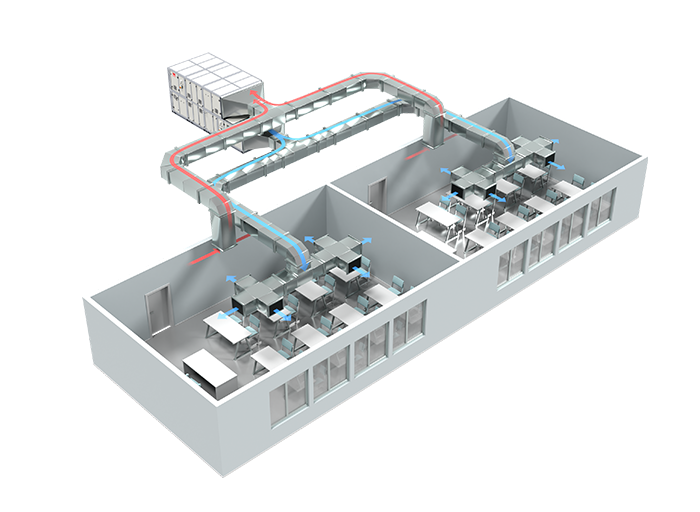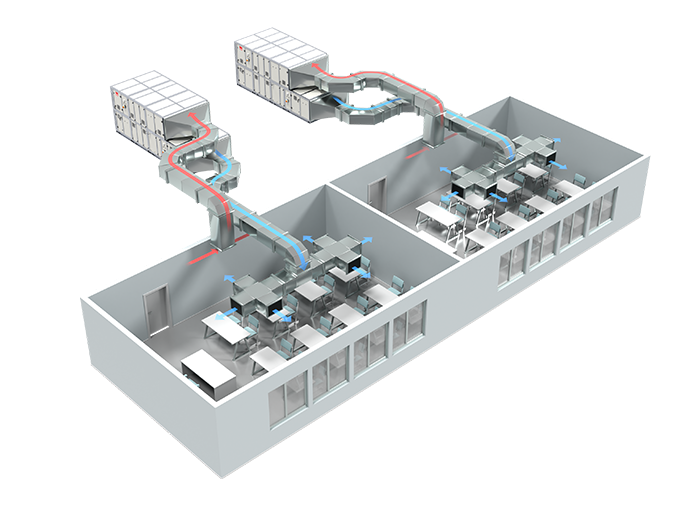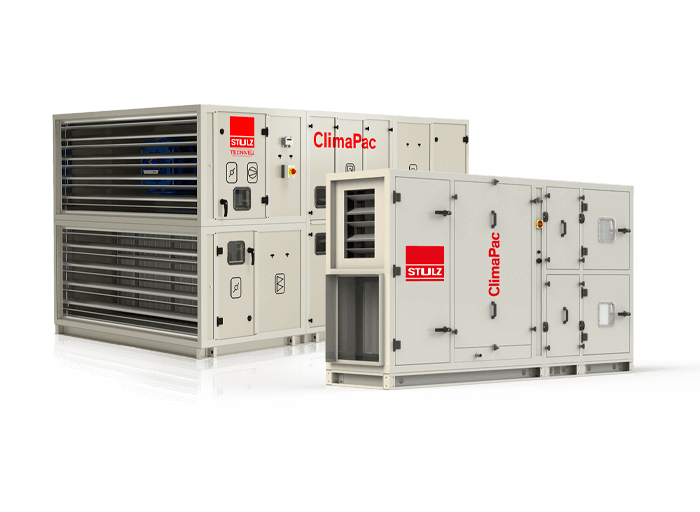Ventilation for schools and classrooms, and in particular the correct way to operate it, is not that simple. Selecting the right solution or air handling unit is important. According to various studies conducted by the government and various sector organizations, it has become painfully clear that the ventilation and the overall indoor climate in Dutch schools is on average clearly inadequate, with over 70% of primary and secondary schools having excessively high CO2 levels in the classroom when fully occupied.
A CO2 level that is too high in combination with an unhealthy indoor climate, such as being too humid and too warm, has consequences for the learning performance, due to poor concentration. Teachers and students are exposed to a learning and working environment that, on balance, is not healthy. A good air quality ensures better performance and less absenteeism, we see in reports by TNO, the GGD and the industry organizations.
What is involved?
Ventilation for schools and classrooms, and in particular the correct operation of it, is not that simple. Selecting the right solution or air handling unit is important, but just as important is the total system that is connected to it and also the adjustment is of great importance to achieve a good ventilation system. It is often forgotten that in a classroom there are around 30 children who all bring their own heat load inside. For example, if you look at the fall season, large amounts of moisture can also come in with them. Just think of a wet coat that goes on the heater or the children themselves entering the classroom partly wet. So there is a lot involved in achieving a properly functioning ventilation system. And many factors need to be taken into account.
What is needed for a good and healthy indoor climate? From the above it should be clear that the right temperature and humidity in combination with possible control on CO2 values are necessary for the right parameters to learn and perform, within a healthy environment. These CO2 values are becoming increasingly important in view of the upcoming plans of the government to provide schools with a CO2 meter. The aim of this is to increase the quality of ventilation in schools.
Classes
| Class C (acceptable) | Class B (good) | Class A (very good) |
|---|---|---|
| CO2 concentration < 1200 ppm | CO2 concentration < 950 ppm | CO2 concentration < 800 ppm |
| Minimum fresh air supply 21,6 m³/h per person | Minimum fresh air supply 30.6 m³/h per person | Minimum fresh air supply 43,2 m³/h per person |
| Quality of air supply Minimum filter class M5 | Quality of air supply Minimum filter class M6 | Quality of air supply Minimum filter class F7 |
| Heat Recovery No requirements | Heat Recovery High degree of separation between return and supply air | Heat Recovery 100% separation of return and supply air |
| Air velocity in occupied zone In summer not higher than 0.23 m/s In winter no higher than 0.19 m/s | Air velocity in occupied zone In summer not more than 0.2 m/s In winter not more than 0.16 m/s | Air velocity in occupied zone In summer not more than 0.16 m/s In winter not more than 0.13 m/s |
| Installation Noise Maximum 35 dB | Installation Noise Maximum 33 dB | Installation Noise Maximum 30 dB |
Systems
When we talk about school ventilation, two types of systems are relevant. A centralized or a decentralized system. The type of building then determines which system is most suitable for the solution. Our experts will be happy to advise you on this.
Central system
In a central ventilation system, one large air handling unit provides ventilation for several classrooms. In most cases, the unit is located on top of the roof. Air ducts distribute fresh outside air to various rooms where grilles blow it in silently. A separate duct system sucks the dirty air back out of the room and brings it outside via heat recovery (WTW). In this way, fresh outside air is continuously ventilated into the building.

Decentralized system
A decentralized system consists of one air handling unit per room or area. The unit can be placed outside on the roof but can also be placed inside above the false ceiling. This requires less ductwork than a central system. Both systems can be equipped with a heat pump. This ensures that the air we bring in is also conditioned or cooled or heated. As a result, you are always guaranteed a pleasant indoor climate. STULZ supplies this solution in the form of the Climpac Compact, an air handling unit built on a frame with heat pump reed cooling assembled and connected to the AHU.


ClimaPac (Compact)
ClimaPac Air Handling Units Series offer flexible and modular configurable solutions, adapting to the needs of the most demanding proyects with air flows up to 160.000 m³ / h. Also avalaible with heat pump frame and units from Mitsubishi Heavy Industries.

Downloads
-
Download

